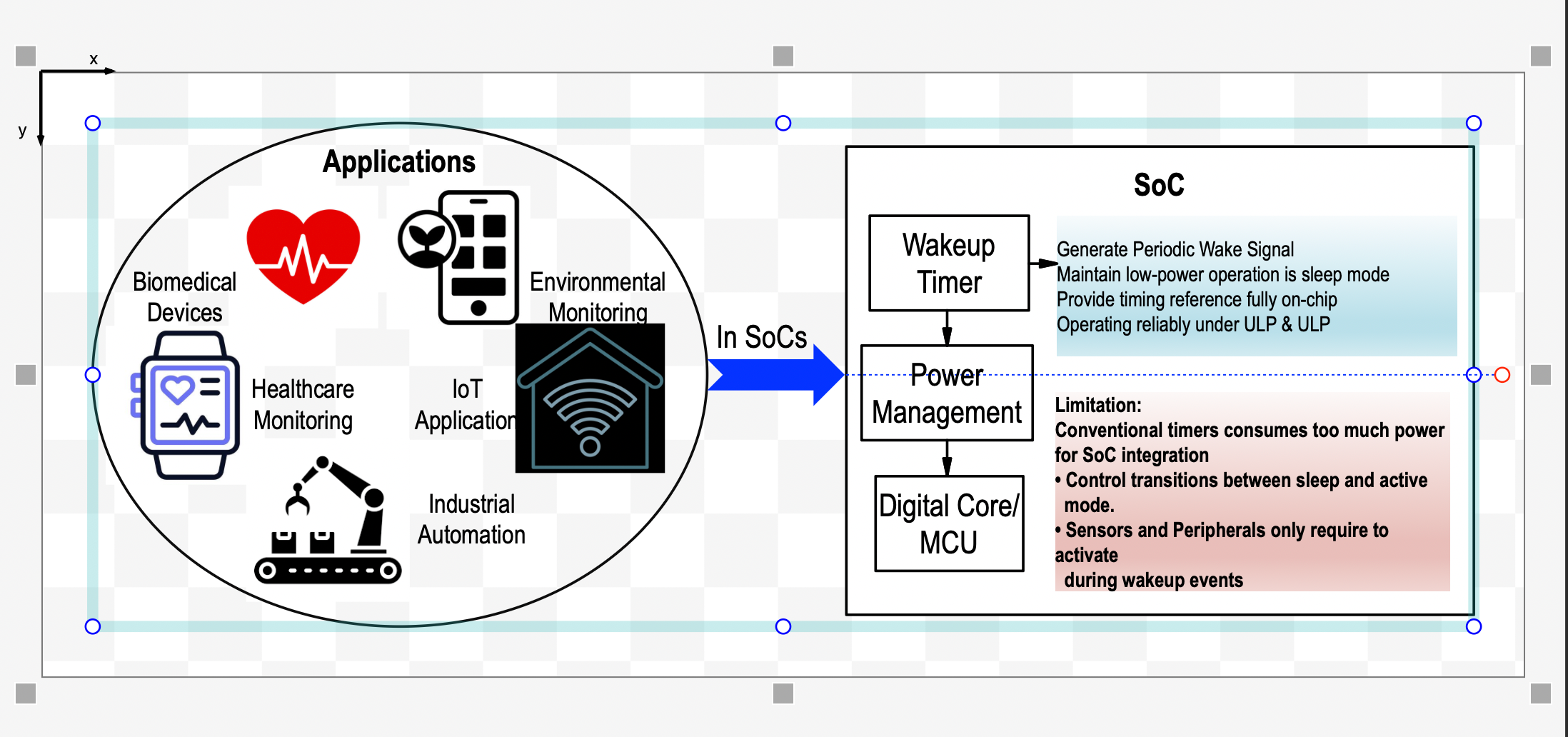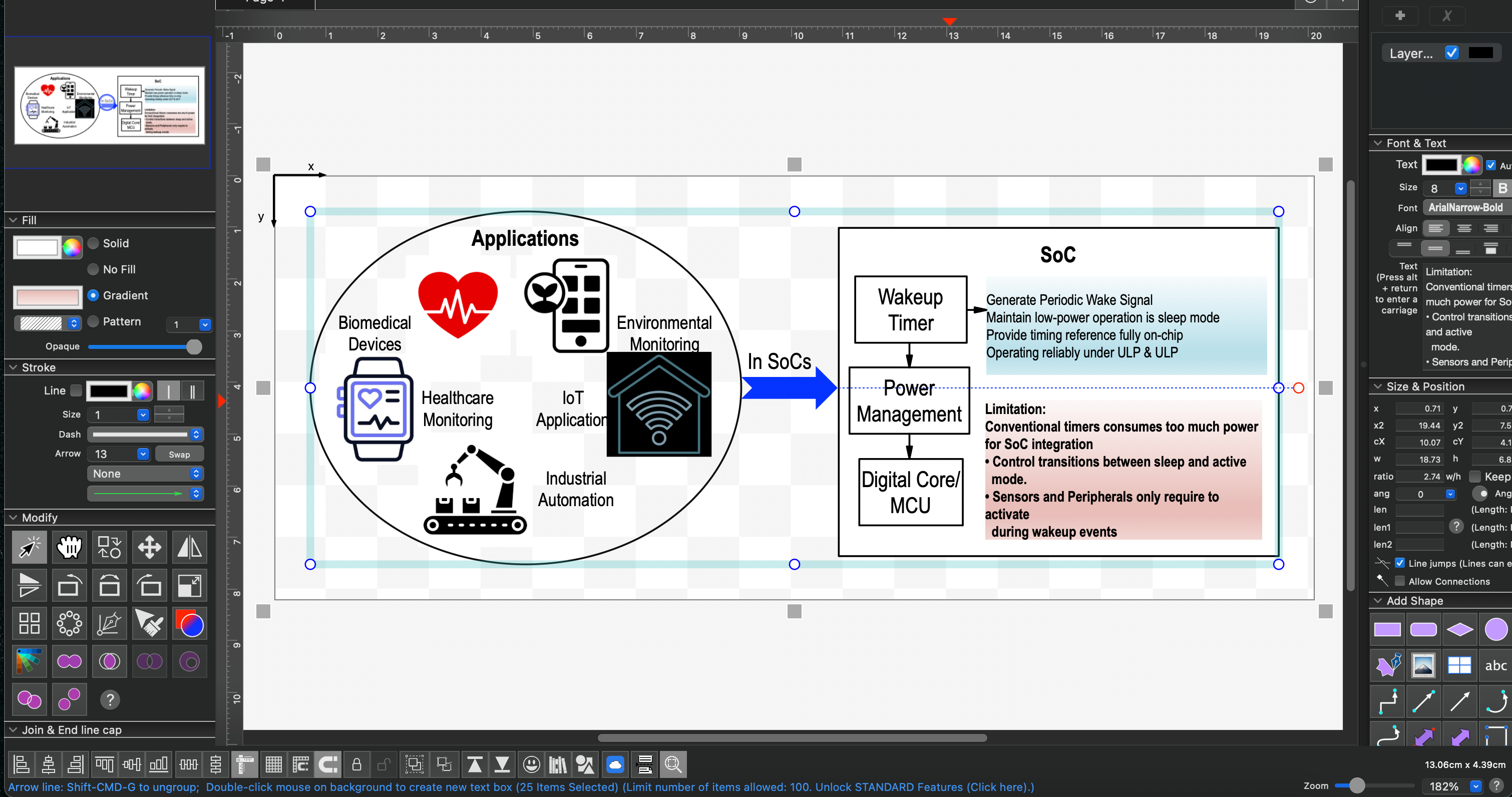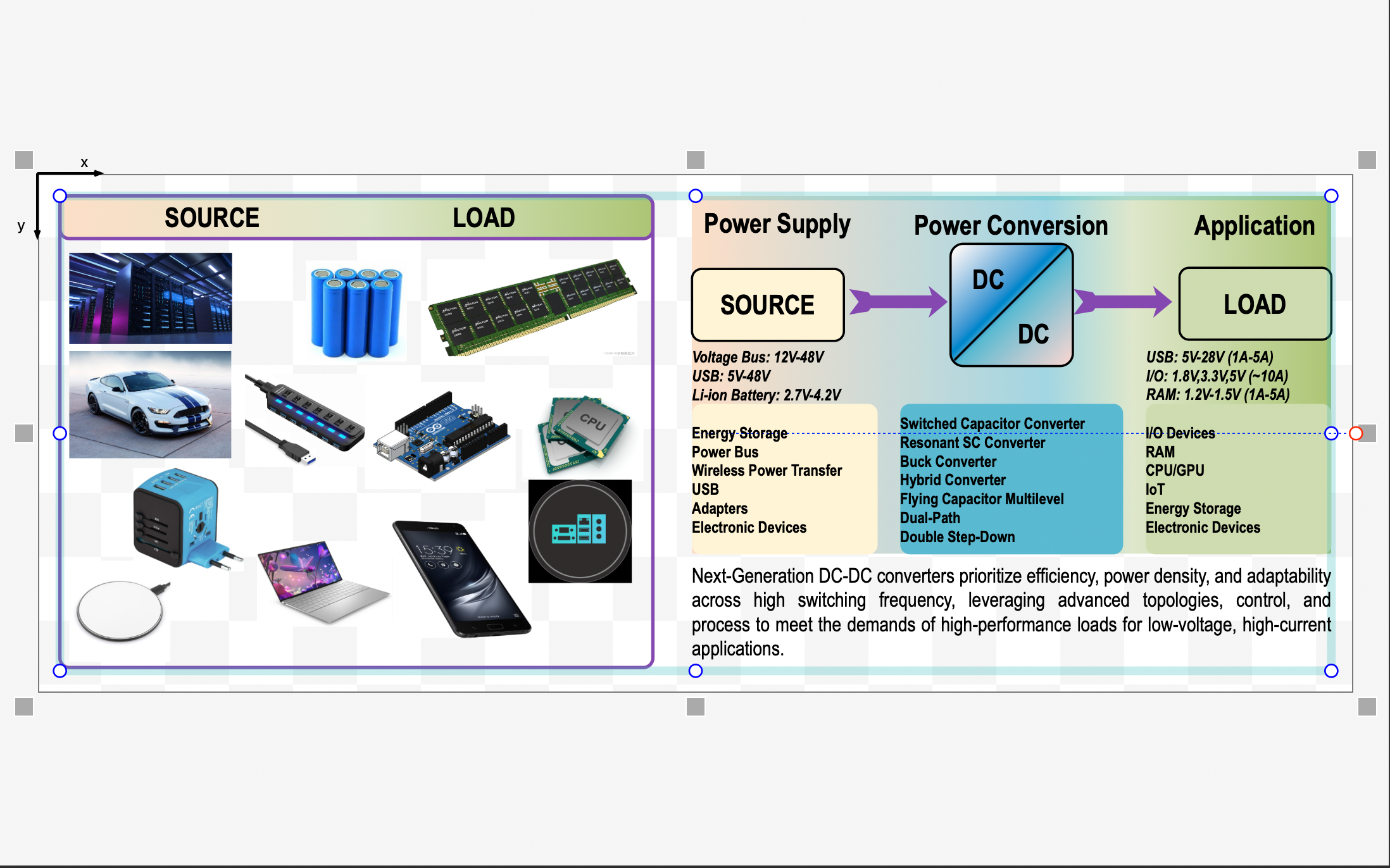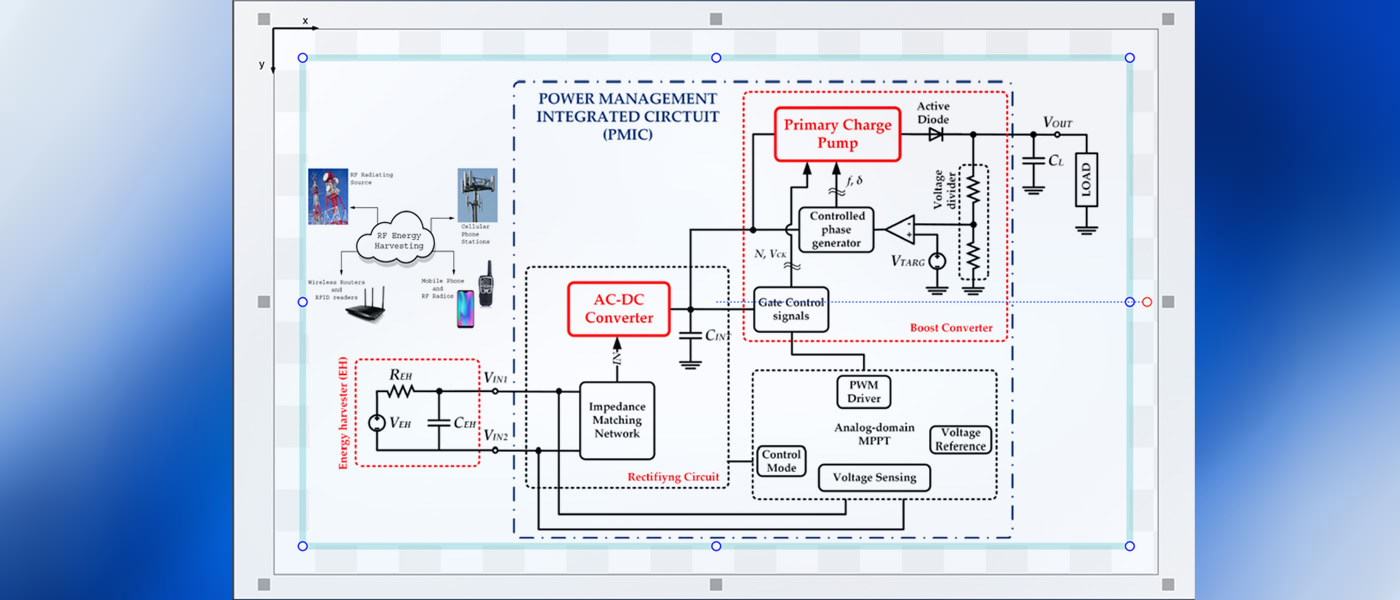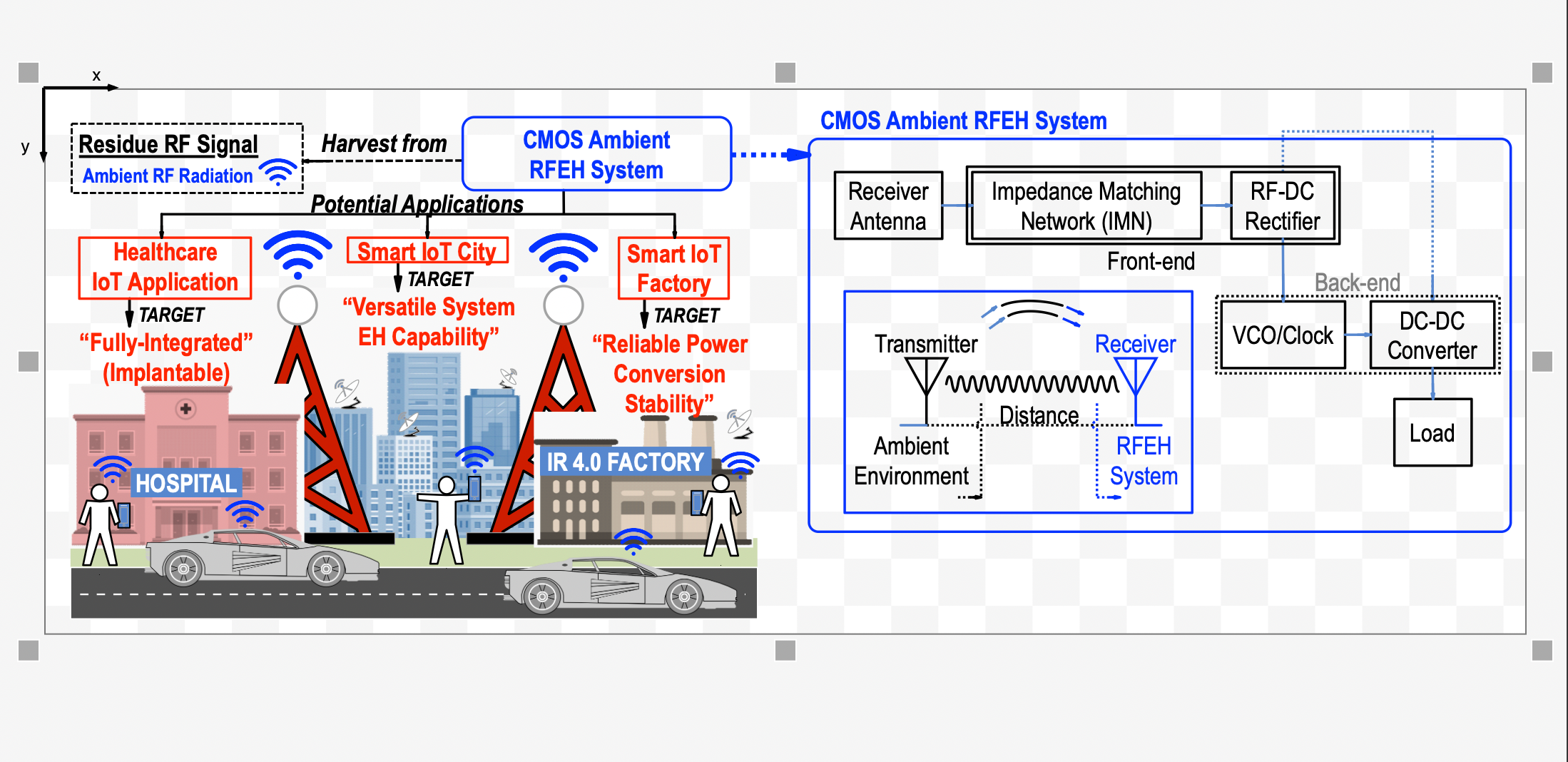The rise of compact, wireless systems is driving innovation in applications ranging from biomedical implants and environmental monitoring to next-generation smart sensors. These microsystems are becoming smaller, smarter, and more autonomous—but one critical bottleneck remains: power consumption.
To operate efficiently, these systems rely on duty-cycling—waking up periodically to perform tasks before returning to a low-power sleep mode. This requires an accurate and energy-efficient wakeup timer. Conventional timers, often based on crystal oscillators, offer excellent frequency stability but depend on bulky off-chip components and draw too much power for ultra-compact designs. This limits their use in dense System-on-Chip (SoC) solutions essential for Internet-of-Things (IoT) devices and long-lifetime edge nodes.
To overcome this, we are developing a fully integrated, on-chip wakeup timer architecture that delivers both ultra-low power (ULP) and ultra-low voltage (ULV) performance. By leveraging relaxation oscillator (RxO) designs, we avoid the size and frequency limitations of traditional LC-tanks and bypass the PVT sensitivity of ring oscillators. Unlike conventional RxOs that use dynamic comparators requiring high supply voltage and wide voltage swing, our approach is optimized for sub-0.5V operation—critical for systems powered by energy harvesting or microbatteries.
Our goal is to create a timing solution that consumes microwatts or less, occupies minimal chip area, and remains stable across process, voltage, and temperature variations. This enables reliable operation in harsh or constrained environments without compromising system performance. From implantables that monitor health silently for years, to ultra-compact sensor nodes scattered across forests or cities, our technology is designed to power the edge—quietly, accurately, and efficiently.
📌 Main Points :
The Challenge
- Small wireless systems need accurate, low-power timers for wake/sleep cycles.
- Traditional solutions are bulky and consume too much power (e.g., crystal oscillators).
Need for Wake-Up Timers :
- Essential for duty-cycling - devices sleep and wake periodically to save power.
- Must be accurate and energy-efficient for long-lifetime, autonomous operation.
The Solution – On-Chip ULP/ULV Wake-Up Timer
- Fully integrated design, no off-chip components needed.
- Based on relaxation oscillator (RxO) architecture.
- Avoids size issues of LC-tanks and instability of ring oscillators.
- Optimized for sub-0.5V supply, ideal for energy-harvesting systems.
Advantages
- Microwatt-level power consumption.
- Small chip area.
- Robust against PVT (Process, Voltage, Temperature) variations.
Applications
- Biomedical implants that monitor health over years.
- Environmental sensors in remote forests or urban areas.
- IoT edge devices in smart cities and infrastructure.
